Help us find Farming’s Greatest Machine
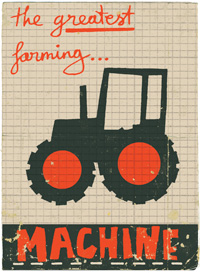
Farming has gone from a manual to a mechanised industry.
Jobs that were once done by hand are now done by high-tech machines and computers and few areas of our industry have not been transformed by this mechanical revolution.
Some machines, however, stand out and, in association with EB Equipment, we want to discover what the Greatest Farming Machine has been in the past 75 years.
|
We’ve outlined a few possibilities below – but we’d like to know what you think.
The Massey-Harris 726 combine harvester
Many cereal growers will already have decided which machine has made the biggest impact on their farms – it has to be the combine harvester. But deciding which combine made the breakthrough is less clear cut.
Combines were not invented by one person or one company, but are the result of many different ideas developed over 180 years or more. But the machine that brought it all together for British farmers was the Massey-Harris 726.
The few British farmers who harvested with a combine during the 1930s and 1940s had to use machines imported expensively from the USA and Canada, but that ended when Massey-Harris, the world leader in combine development, introduced its 726 model in 1949.
It was built in a new factory in Scotland and was designed for British and European conditions.
In terms of technology and affordability, it was a big breakthrough. The cutting width was 8ft 6in (2.6m) and initially the power unit was a 55hp petrol engine, but a Perkins L4 diesel was available later.
For many thousands of farmers, the 726 was the first combine that offered a realistic chance to make massive gains in efficiency and productivity by ditching the binder and the threshing machine.
Michael Williams
The Maschio HB3000 power harrow
As all real farmers know, ploughing is the best start for a seed-bed.
Thirty years ago, however, the next step in the process could be a nightmare, especially for us heavy-land growers. Multiple passes with trailed discs would sometimes be needed; a bit like what experts today call min-till.
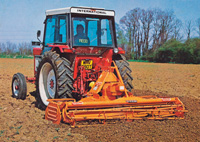
Then, in the early 1980s our first power harrow arrived, a Maschio HB3000, revolutionising seed-bed preparation.
Since then, we’ve never been without one, but that first one was the best. It was sturdy, but light, thanks to a lack of superstructure and multiple guards. We ran it behind a 2wd Ford 7600 on low-pressure duals and no front weights.
Minimum power requirement was only 70hp, so the 7600 was perfect, skipping over the ground, levelling out all signs of my incompetent ploughing.
It’s true that blade changing was a knuckle-skinning nightmare – although the lack of guards made access easier than on some of today’s machines – but that was small price to pay for the job it did.
Since that one, they have got heavier and more complicated and, for 15 years, I’ve run them with seed drills on top. But they’re still perfect for tilth-making – and sorting out my uneven furrows.
Charlie Flindt
The Ferguson TE20 tractor
On 6 July, 1946 the first Ferguson TE20 tractor rolled off the line at Banner Lane, Coventry, starting production of the Little Grey Fergie, which changed tractor design forever and revolutionised power farming across the globe.
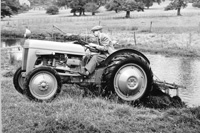
Compare a TE20 with other tractors of the same era and it’s clear to see just how far ahead of its time it really was.
The antiquated ideas on its heavy, bulky counterparts had more in common with small steam engines, from which they were developed, than modern tractors.
More than 516,000 TE20 tractors were built and exported all over the world. And many of these tractors are working today, still helping to mechanise operations on small farms.
But Harry Ferguson’s vision was not just simply to sell tractors. “Agriculture should be the first industry to be modernised and not the last,” he said.
His plan was to lift people out of poverty. In 1946, at the initial meeting of the Food and Agriculture Organisation, he spoke of his World Plan and “price reducing system” that allowed farmers to “reduce costs not just on a beautiful level field or in a particular crop, like wheat, but everywhere, under all conditions, all over the world”, he explained.
Poverty, sadly, still remains – but the introduction of the TE20 tractor undoubtedly helped in the battle to combat it.
Mick Roberts
Honda TRX300 ‘Big Red’
They may not “plough the fields and scatter”, but ATVs – or quads, if you like – deserve the title of Farming’s Greatest Machine for transforming work and transport practices on farms across the country.
It’s all thanks to British hill farmers, who were first to appreciate the ATV’s work-machine potential, and Honda, whose TRX300 of the late 1980s/early 1990s was one of the most popular and effective vehicles of this type.
Tidy examples that have been spruced up after an easy life are still much in demand, selling for more money today than they did when new.
Shepherds, still among the biggest users of ATVs, love it when they have an eager, trustworthy and responsive sheepdog to work with – and many thought much the same about the “Big Red”.
Bullet-proof reliability, strong performance, reasonable economy, easy manoeuvrability and tenacious grip are endearing qualities.
It’s been a favourite with other users, too, providing rapid mobility at relatively low cost and with little impact on wet ground on dairy, pig and beef units, while helping arable growers put slug pellets and other pesticides on to crops when the land would not support bigger machinery.
And on top of that, quads like Honda’s TRX300 have put some fun and exhilaration into the daily farming routine.
Peter Hill
Land Rover Defender 90 tdi
Yes, you could argue the Grey Ferguson is farming’s great machine and, yes, the combine revolutionised harvesting, but there’s something that surpasses even these achievements: The Land Rover Defender 90 tdi.
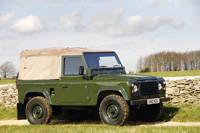
As ubiquitous as the Fergy on UK farms, but more productive than a harvester, it has done more for farming than any furrow maker or crop thresher ever could since its introduction in 1990.
And here’s why. You can eulogise about Henry Ferguson’s three-point-linkage system’s flexibility over Land Rover’s 4×4 platform introduced not long after in 1954. And, yes, both have long-lasting appeal. But the Defender 90 tdi remains a benchmark by which other, later 4x4s are still judged.
A 2009 Land Rover 90 2.4tdci has a basic list price of £16,600, does 24mpg and is capable of pulling 3.5t. At its introduction the Defender tdi cost less, did more mpg and pulled the same weight.
While combines languish in sheds for 11 months and grey Fergies largely only see active service at summer shows, quietly and without fuss an army of Defender 90 tdis are busy keeping UK farm businesses moving 24/7, 365 days of the year.
Whether ferrying stock to market, collecting spares to keep combines harvesting, taking Fergies to shows or getting kids to school, the Defender 90 tdi isn’t just the best 4×4 by far, it’s farming’s greatest asset aside from the farmer himself.
Simon Wragg
Lely Astronaut robotic milker
The arrival of the first Lely Astronaut robotic milker in 1995 was important, but it didn’t seem like a particularly momentous event in the history of farm machinery development.
Yet nearly 15 years later, it is gaining significance. Not so much because of the welfare benefits it gave to cows and the economic benefits it gave to dairy farms, but because of the effect it had on young farmers’ social lives.
Being a small dairy farmer is a round-the-clock, 365 days a year job with holidays few and far between. Across Europe it was getting harder and harder for young dairy farmers to find a wife because women knew that dairying often meant a life of hard graft.
But the arrival of the robotic milker liberated the farmer from the twice-a-day milking and made him a much more marriageable prospect.
Robot milkers are not cheap, so their uptake has been steady rather than spectacular. But the proportion of all milk that comes via a robot milker is rising steadily and some pundits reckon that it can only be a matter of time before all cows are milked this way. Robot feeders and muckscrapers are gaining ground, too.
Arnold Schwarzenegger had it right in Terminator 2 – the robots are coming.
David Cousins
Other possible contenders for the Greatest Farming Machine
- MF35 tractor
- Ford 5000 tractor
- Massey 780 combine
- Howard Rotaspreader
- Vicon Varispreader
Why celebrate these greatest?
Farmers Weekly is celebrating its 75th anniversary this year so we want to celebrate other great farming icons of the past 75 years.
What do you think?
 Do you agree or disagree with our suggestions for what should win the accolade The Great Farming Machine – or, better still, do you have additional ideas of your own? Tell us what you (ideally giving us a few words explaining your choice). Post your suggestions on our website forums or email to tell us at fwfarmlife@rbi.co.uk.
Do you agree or disagree with our suggestions for what should win the accolade The Great Farming Machine – or, better still, do you have additional ideas of your own? Tell us what you (ideally giving us a few words explaining your choice). Post your suggestions on our website forums or email to tell us at fwfarmlife@rbi.co.uk.
Why nominate?
Everyone who contributes a suggestion will be entered into a draw – the first one drawn in each of the six categories will win a year’s free subscription to Farmers Weekly.
Other Greatest
As well as The Greatest Farming Machine, we’ll be looking for your suggestions in five other categories in this series
With your help, we’ll be establishing what is The Greatest Farming Innovation, who is the greatest farming figure, when the greatest farming decade was, what’s the greatest farming View and what has been the greatest farming Cock-up.
Keep an eye on the magazine and the website over coming weeks to see how you can get involved. We’ll be drawing up a shortlist from all the suggestions and then giving you the chance to vote.
>>More on The Greatest… series>>

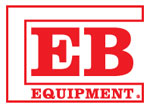 The Greatest Farming Innovation is brought to you in association with
The Greatest Farming Innovation is brought to you in association with 